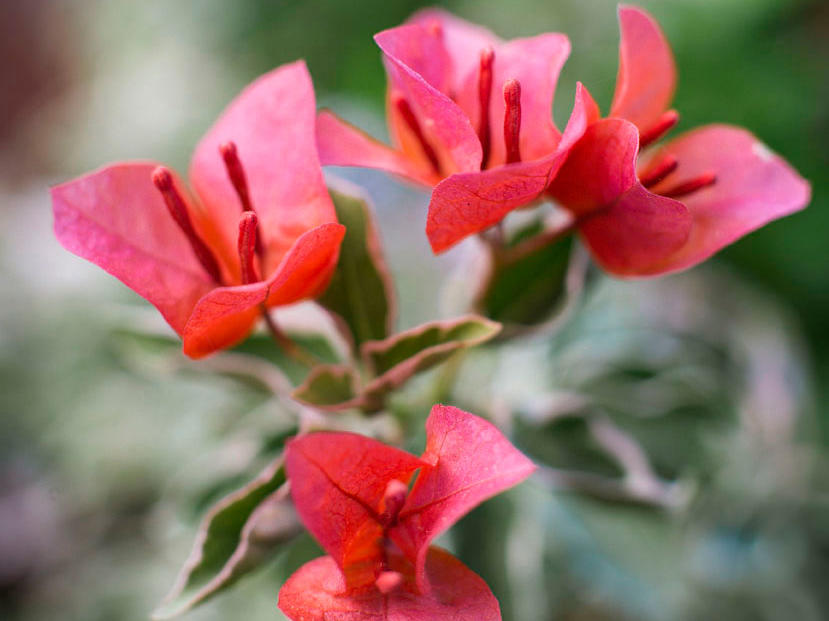
August

Plant
Plant a crop of basil for late-summer or fall harvest. Use leaves in salads or cooking. Pinch off new growth at planting time to develop bushiness. For making pesto, choose an Italian large-leaf type (look for Italian variety names); cut the plant back by two-thirds once it is large enough to provide enough greenery for a recipe (for small batches of pesto, cut off individual stems). Fertilize the plant, keep the soil moist, and harvest a second crop in a few weeks.
For a show of flowers that lasts well into fall in Northern California’s mild-winter areas, try one of the following long-blooming shrubs or shrubby perennials: abutilon, blue hibiscus, Brazilian plume flower, butterfly bush, cape fuchsia, lavatera, oleander, plumbago, princess flower (in Sunset climate zones 16 and 17 only), and a variety of salvias. Hardiness varies; before buying a plant, check to make sure it’s adapted to your climate.
If you plan to transform your garden into an island paradise, plant tropicals soon so they can become established before temperatures cool. Give marginally hardy plants extra protection by locating them against a warm, sunny wall or beneath an overhang. Hardy choices for zones 8, 9, and 14-17 (unless noted) include bougainvillea (marginal in colder areas), canna, Cordyline australis, ‘Black Magic’ elephant’s ear (after frost, dig up tubers in all but zones 14-17; apply mulch in zones 14 and 15), ginger lily (Hedychium), honey bush, Japanese banana (Musa basjoo), sago palm, Tasmanian tree fern. Hardy in zones 14-17 (unless noted): Australian tree fern (except zone 14), blue hibiscus, datura (except zones 14-15), lady palm.
For the best selection, start vegetables from seed; seedlings take six to eight weeks to reach transplant size (zones 7-9, 14-17). Three Western mail-order sources offer some tasty varieties. From Bountiful Gardens, try ‘Seven Hills’ brussels sprouts, ‘All Seasons’ or ‘Red Drumhead’ cabbage, and ‘All-the-Year-Round’ or ‘Purple Cape’ cauliflower. Renee’s Garden has ‘Super Rapini’ broccoli raab and ‘Green Fortune’ baby bok choy. And from Seeds of Change, try ‘Nutri-Bud’ broccoli or ‘Long Island’ brussels sprouts (also sells ‘Red Drumhead’ cabbage and ‘All-the-Year-Round’ cauliflower seeds).
Maintain
Cut flowers. Before placing flowers in a vase, wash the container in hot soapy water to eliminate bacteria and fungi. Then add some homebrewed floral food to the water. To make it, combine 1 cup lemon-lime soda (not diet), 3 cups warm water, and ½ teaspoon household bleach (or mix 2 teaspoons sugar, 2 tablespoons white vinegar, and ½ teaspoon bleach in 1 quart water). Fill the vase partway with the solution. Remove lower leaves from stems, recut the stems under water, and arrange the flowers in the vase. When the solution becomes cloudy, replace it with fresh solution (rinse and recut stems before rearranging).
